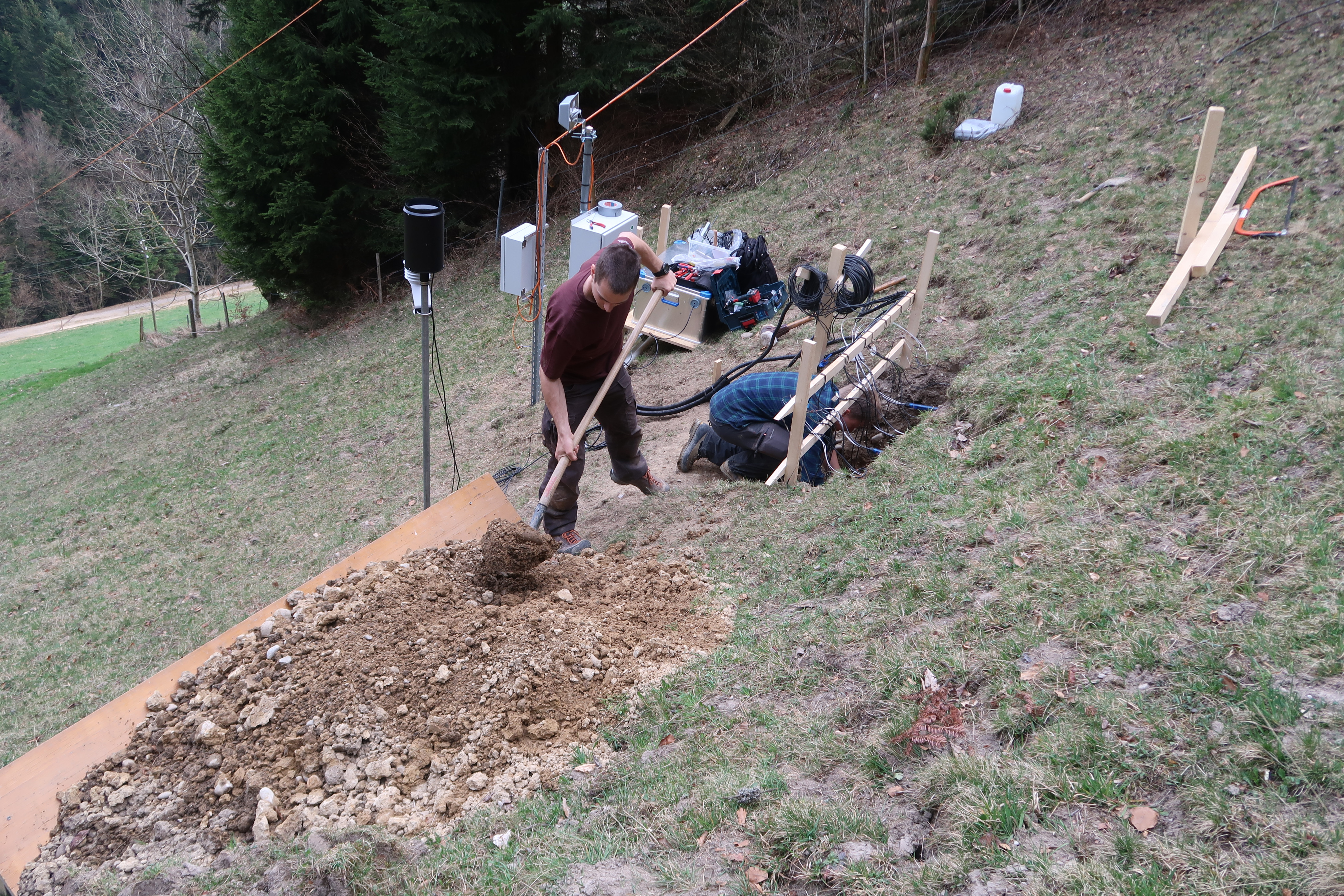Polyphenols are generally toxic to microorganisms. In peatlands, scientists thought microorganisms avoided this toxicity by degrading polyphenols using an oxygen-dependent enzyme, and thus that low-oxygen conditions inhibit microbes’ carbon cycling.

news, journals and articles from all over the world.

Polyphenols are generally toxic to microorganisms. In peatlands, scientists thought microorganisms avoided this toxicity by degrading polyphenols using an oxygen-dependent enzyme, and thus that low-oxygen conditions inhibit microbes’ carbon cycling.
Ammonia-oxidizing microorganisms (AOMs) use ammonia as an energy source while converting it to nitrite and play a pivotal role in the global nitrogen cycle. This study explored whether different AOM species preferred to use urea over ammonia. It found that some AOMs preferred urea while others used ammonia and urea simultaneously.

A new book by a University of Illinois Urbana-Champaign expert in law and policy explores the history and development of the U.S. conservation policy, offering insight into how Congress works, how policy is put together, and the challenge of balancing narrow and public interests in addressing pressing agricultural and environmental topics.
The Wilkes Climate Launch Prize is one of the largest university-affiliate climate awards in the world and is geared to spur innovation and breakthroughs. The prize is specifically calibrated to support unconventional or first-of-a-kind projects that often have difficulty getting funding.
Drylands in the western United States are currently in the grips of a 23-year “megadrought” and one West Virginia University researcher is working to gain a better understanding of this extreme climate event.
Bacteriophages are common in soil ecosystems, but many of these phages and the bacteria they target have not been identified.
A team of researchers led a study that has revealed valuable details about the role that calcite plays in the long-term stability of soil organic matter (SOM), which represents the Earth’s largest terrestrial carbon reservoir. Maintaining the stability of this reservoir…
Researchers have identified buried kimberlite, the rocky home of diamonds, by testing the DNA of microbes in the surface soil.
Regardless of how one says ‘tomato,’ they all contain tomatine, a toxin in the plant’s green fruit, leaves, and roots. Tomatoes produce the bitter-tasting compound — a major plant-specialized metabolite secreted from the roots — to defend against pathogens and foragers.
Climate change increases the need for artificial irrigation of agricultural areas. When water evaporates, however, salts remain in the upper soil layers and increase the plant’s stress.

A new paper from researchers at UD, the University of Maryland and George Washington University published in Nature Sustainability shows the spread and cost of saltwater intrusion from 2011-2017 in farms located in those mid-Atlantic states. The paper highlights how between the years 2011-2017, the area covered by visible salt patches almost doubled, with over 19,000 acres converted to marsh. Potential economic losses from the salt patches during that time period totaled over $427,000.

In a multi-generation experiment, researchers from the College of Agricultural, Consumer and Environmental Sciences (ACES) found microbes helped plants cope with drought, but not in response to plants’ cries for help. Instead, the environment itself selected for drought-tolerant microbes. And while those hardy microbes were doing their thing, they just happened to make plants more drought-tolerant, too.
The Program in Public Health at the University of California, Irvine has received a five-year, $2.7 million grant from the National Institute of Environmental Health Sciences to research the connection between low-level lead exposure during pregnancy and early childhood and children’s school performance and behavior in Santa Ana, California.
Corn growers seeking to increase the amount of nitrogen taken up by their crop can adjust many aspects of fertilizer application, but recent studies from the University of Illinois Urbana-Champaign show those tweaks don’t do much to improve uptake efficiency from fertilizer. That’s because, the studies show, corn takes up the majority of its nitrogen – about 67% on average – from sources occurring naturally in soil, not from fertilizer.
Plant life and soil conditions impact tidal marsh carbon storage
Soil microbes decompose organic matter into simple carbon compounds – what soil conditions do these microbes prefer and where do they work most efficiently?
Electrical conductivity sensors were able to predict soil texture – especially at different depths – and correlated with corn yield data
Farmers who use best practices to reduce carbon can be rewarded with soil carbon credits and earn additional income through carbon markets
Soils with high concentrations of microplastics could experience limited water flow
The soil used for crops provides more than a space to grow.
Symposium will feature presentations about modeling and coordinating soil moisture information in the United States
Symposium will feature presentations about studies in the south, west, north and Pacific Northwest regarding land management and farming
Type of litterfall, and the way water moves in and around tree islands are two attributes that helps them store carbon better than their marshy neighbors
Symposium will present information that will inform decision makers to support safe urban food production, treatment of urban pollutants, protection of water resources, improvement of environmental health, and human well-being
Symposium to cover biological and physical ways to increase carbon in soil

Landslides threaten many lives. A new study suggests we could predict landslides better with electrical measurements of soil.
Greenhouse experiment finds that decreased soil moisture can hinder nematode speed and migration toward roots
Dr. Jo Handelsman chosen as plenary speaker by Soil Science Society of America
Reconnecting rainfall to soil using rain gardens, permeable pavement and more can reduce the load on stormwater systems, keeping water bodies healthier
The latest research on plants brought to you by Newswise.
Exploring an agricultural tool that works below the surface
Two-year study found no positive, or negative, impacts of integrated crop-livestock systems
Naturally occurring soil fungus can help protect crops from disease
Students sponsored by Soil Science Society of America participate in skills test to build field experience; learn about soils of Scotland
Taking a systems approach can steadily improve soil health even with underground crops

Researchers suspect beneficial fungi increase plant productivity and protect from disease
Lime is a very important soil amendment used to grow crops. To help ensure the correct amount is applied where it is needed most, the Clemson University Precision Agriculture Team has developed the Reverse Lime Rate Calculator.
Global warming can result in the spread of peatland vegetation in the Arctic. An international research group has discovered signs of ‘proto-peat’, which may be the beginning of new peatlands.
Preliminary research focuses on biochar application to two evergreen tree species
Researchers in Florida find that split nutrient application improves tree growth and yields
Benefits positive but impacted by management, environment
Weathering of rocks and organic matter important in soil formation
Both frozen carbon dioxide and organic matter are important forms of soil carbon
Soil on Mars is different than soil on Earth, and exploration is helping us learn more
Rocky soils pose challenges for crops, and new research aims to understand how their roots adapt
Researchers test new, inexpensive device to provide critical information
Important contribution to the ongoing climate policy discussion
Important contribution to the ongoing climate policy discussion
Your morning cup o’ Joe depends on healthy soil
Educating the public about soil can help us protect the natural resource